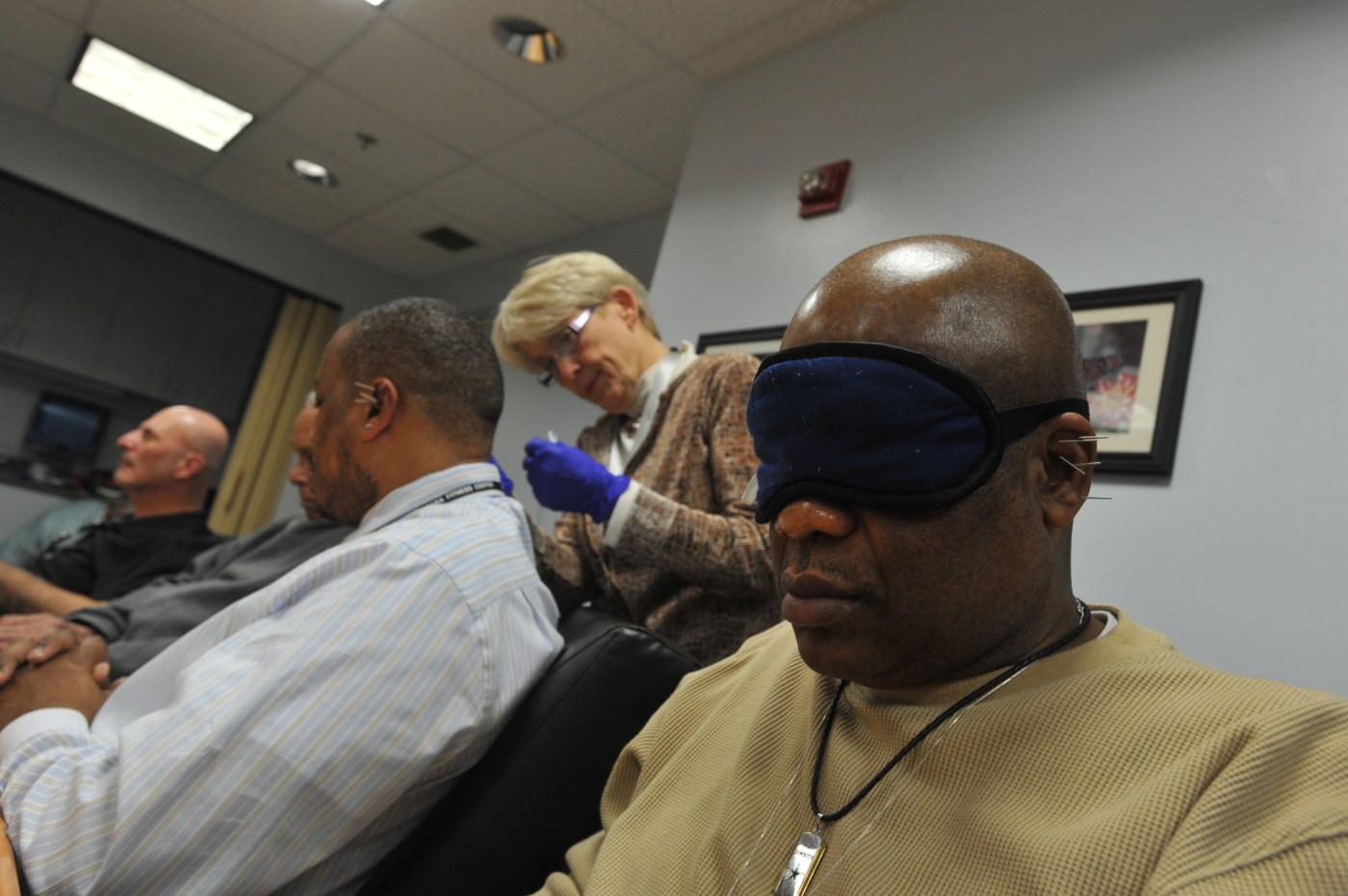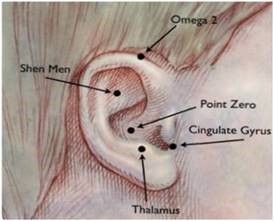During the Iraq and Afghanistan wars, a type of non-conventional therapy known as “battlefield acupuncture” (BFA) gained traction at Walter Reed Army Medical Center to treat the pain of wounded military men and women. “Western medicine was great for helping these patients but had its failures,” BFA originator and retired Air Force Col. Dr. Richard Niemtzow wrote in an essay in the journal Medical Acupuncture. In recent years, VA has been integrating BFA – a type of acupuncture in which needles are placed on several specified points on each ear – as a choice for pain relief alongside conventional medications.
VA researchers have studied the therapy and published an article with their findings in the August 2021 issue of the journal Pain Medicine. The article, titled “The Implementation and Effectiveness of Battlefield Auricular Acupuncture for Pain,” discusses the promise and challenges of the approach.
“Pain is extremely prevalent among Veterans and others, and there is a need for novel pain treatment approaches,” says VA’s Dr. Stephanie Taylor, the article’s lead author and the director of VA’s Complementary and Integrative Health Evaluation Center. “Not everything works for everybody. You need as many effective tools in the toolbox as you can get.”
Short-term fix for pervasive problem
Chronic (long-lasting) pain affects more than 50 million adults in the U.S., according to the Centers for Disease Control and Prevention (CDC). And chronic pain is more prevalent and intense among Veterans than among Americans generally. Medications have long been the mainstay of pain management. But these pharmaceuticals – including opioids, which are commonly prescribed for chronic pain – can be risky and have unwanted side effects. “I’ve spoken to so many Veterans who said they were on too many medications – more than 30, in some cases,” Taylor says. “They were looking for other safe and effective pain management options.”
In reducing Veterans’ pain while also lessening risk, VA offers battlefield acupuncture among other non-medication alternatives. These approaches can be used instead of, or along with, drugs. BFA is a type of auricular (ear) acupuncture that is based on the “meridian system” from traditional Chinese acupuncture. In BFA, health care providers place up to five sterile needles shaped like tiny darts in each ear at specific points. These points are believed to affect the entire body. The needles are meant to stay in the ears for several days. Precisely how the therapy works is unclear, but the needles may stimulate the central nervous system and reduce the sensation of pain by affecting parts of the brain such as the hypothalamus.
More than 75% of patients report immediate decrease in pain
As discussed in the Pain Medicine article, BFA has been found to provide immediate, short-term reductions in pain for many. “It’s not a long-term fix,” Taylor emphasizes. “But for some people, it represents the first time in a long time they’ve had their pain reduced for even a moment.”
In Pain Medicine, Taylor and her coauthors summarize their research examining the effectiveness of BFA for pain relief. One study, led by VA’s Dr. Steven Zeliadt, examined more than 11,000 BFA users across VA.
The research found that a high proportion of patients benefited, with more than 75 percent of them reporting some immediate decrease in pain intensity after the treatment. In another study, a research team led by VA’s Dr. Dan Federman looked at patients attending an in-demand VA battlefield acupuncture clinic. The investigators found a decrease in pain in 82% of patients, on average, including patients seen in group settings and those seen in individual settings.
More Information
Click here to read the full story.
Click here to learn more about VA research.
Topics in this story
More Stories
In a new series that highlights advancements in VA health care, VA researchers and clinicians are appearing on a Veteran-themed media platform—Wreaths Across America Radio—to tout their critical work.
Recently published findings from the VA Disrupted Care National Project [...]
Diverse representation of women in health care research allows MVP to make discoveries for women’s health







